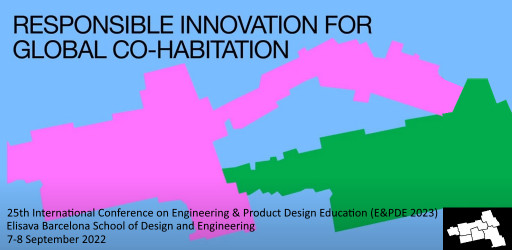DESIGN AND ENGINEERING IN ACADEMIA: LEARNING FROM PRACTICE
Curralo, Ana Filomena; Curado, António; Nunes, Leonel; Lopes, Sergio Ivan
Type:
Year:
2023
Editor:
Buck, Lyndon; Grierson, Hilary; Bohemia, Erik
Author:
Series:
E&PDE
Institution:
Polytechnic Institute de Viana do Castelo, Portugal
Section:
Responsible innovation in design and engineering education
DOI number:
ISBN:
978-1-912254-19-4
Abstract:
Design is a creative and innovative process that takes advantage of engineering's technical knowledge to develop products, services, and benefits for a consumption-driven society. This article highlights the importance of a coordinated approach between design and engineering education as a driver for innovation. To validate this concept, we analyzed several use cases undertaken at a higher education institution that resulted in the systematization of the adopted methodology. Then, a case study, the RnHealth TECH project, has been used to validate the proposed methodology. This project, aims to design and develop new technologies and products, and create interactive materials to prevent and promote awareness regarding the risk of exposure to indoor radon gas, a radioactive gas that tends to accumulate in indoor environments with a known relation to lung cancer. In this context, design and engineering students are collaborating on the design and development of a set of Internet-of-Things (IoT) devices for Indoor Air Quality (IAQ) management and thus promote awareness-raising. Although engineering methodologies have tasks that overlap with the design process, with a focus on functionalities, they may face technical implementation constraints. Product design, on the other hand, must respond to user requirements, user interface, market needs, and product manufacturing requirements, with a focus on satisfying consumers. These two areas complement each other, resulting in a continuous improvement process of product design, particularly in the innovation process development. This multidisciplinary synergy between students and researchers works both ways, with each functional area contributing to the work according to its specificity and influencing the final product. This approach not only develops students' specific technical knowledge but also provides them with new skills that can be applied to improve their technological literacy.
Keywords:





